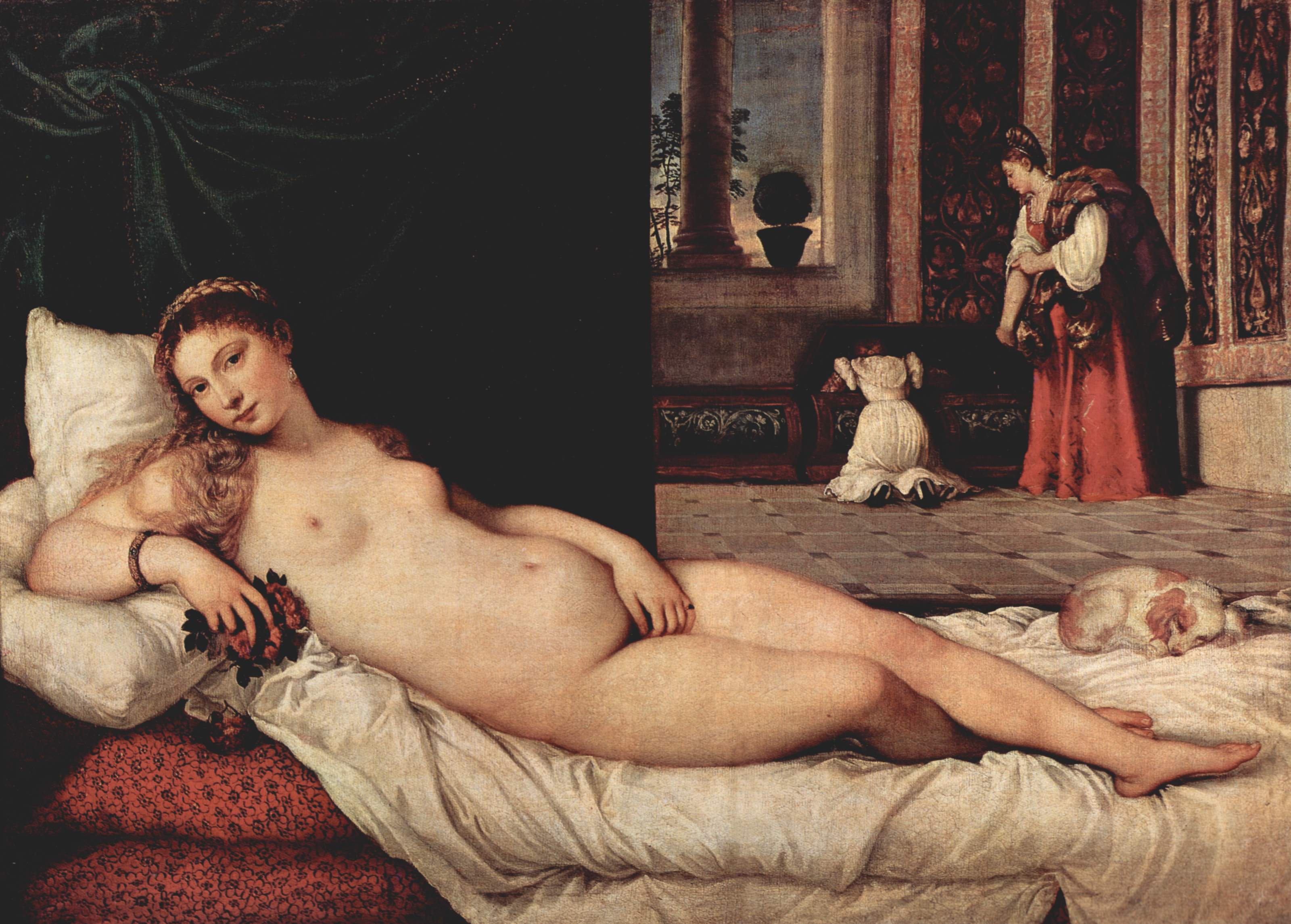- Venus of Urbino
Infobox Painting|

title=Venus of Urbino
artist=Titian
year=1538
type=Oil on canvas
height=119
width=165
city=Florence
museum=Uffizi The "Venus of Urbino" (1538) is anoil painting by the Italian masterTitian . It depicts anude young woman, identified with the goddess Venus, reclining on a couch or bed in the sumptuous surroundings of aRenaissance palace. It hangs in theGalleria degli Uffizi inFlorence . The figure's pose is based on Giorgione's "Sleeping Venus" (c. 1510), however Titian uses more sensuality in comparison to Giorgione's remoteness. Devoid as it is of any classical or allegorical trappings ('Venus' displays none of the attributes of the goddess she is supposed to represent), the painting is unapologetically sexy.The frankness of Venus' expression is often noted; she stares straight at the viewer, unconcerned with her nudity. In her right hand she holds a posy of flowers whilst her left covers her vulva, provocatively placed in the centre of the composition. In the near background a dog, symbolizing fidelity, is asleep.
The painting was commissioned by
Guidobaldo II della Rovere , the Duke ofUrbino . It would originally have decorated a "cassone ", a chest traditionally given inItaly as a wedding present. The maids in the background are shown rummaging through a similar chest, apparently in search of the Venus's clothes. Curiously, given its overtly erotic content, the painting was intended as an instructive 'model' for Giulia Varano, the Duke's extremely young bride. The argument for the painting's didacticism was made by the late art historian Rona Goffen in 1997's “Sex, Space, and Social History in Titian’s Venus of Urbino."In his 1880 travelogue "
A Tramp Abroad ",Mark Twain called the "Venus of Urbino" "the foulest, the vilest, the obscenest picture the world possesses". He proposed that "it was painted for abagnio and it was probably refused because it was a trifle too strong', adding humorously that "in truth, it is a trifle too strong for any place but a public art gallery"."Venus of Urbino" inspired the later painting "Olympia" by
Édouard Manet , in which the figure of Venus was replaced with a prostitute.This work of art was an inspiration for the charachter courtesan Fiammetta Bianchini in the book "In the Company of the Courtesan" by Sarah Dunant.
References
*cite book|last=Berrson|first=Robert|title=Responding to Art|location=Boston|publisher=McGraw Hill|id=ISBN 0-697-25819-X
External links
* [http://employees.oneonta.edu/farberas/arth/arth213/Titian_Venus_urbino.html Titian's Venus of Urbino] - critical review of the painting
Wikimedia Foundation. 2010.
